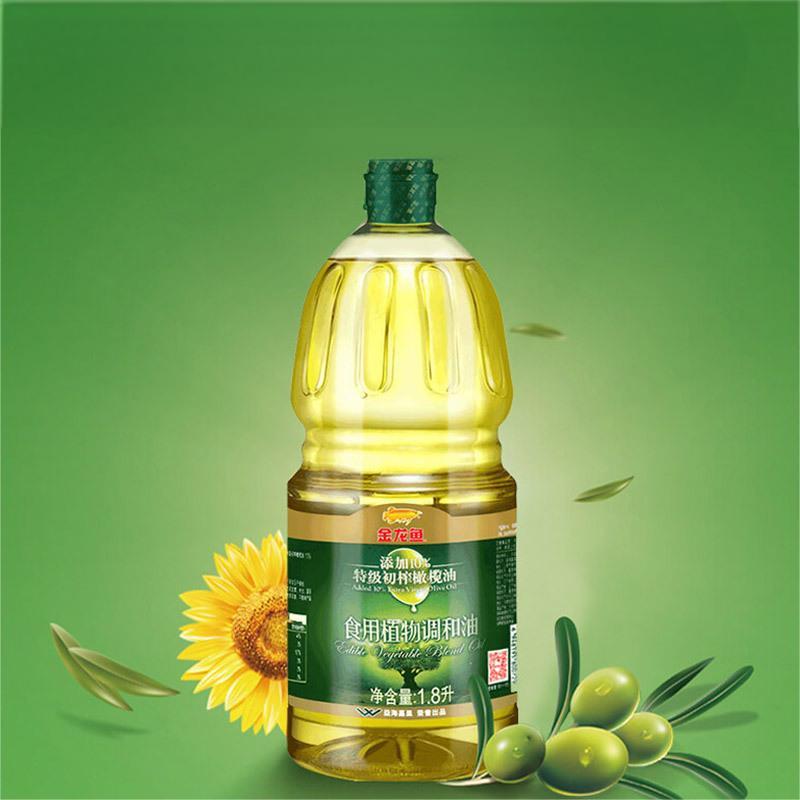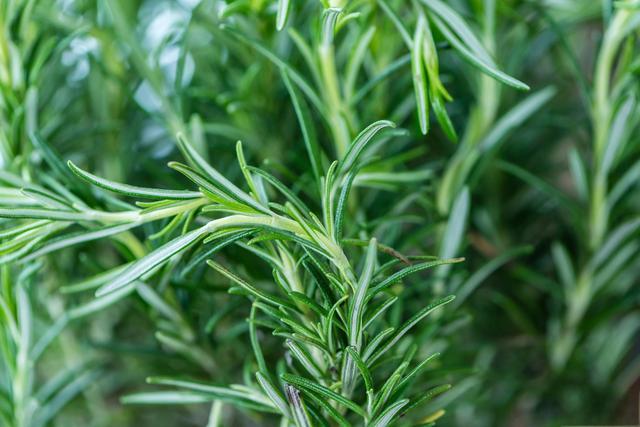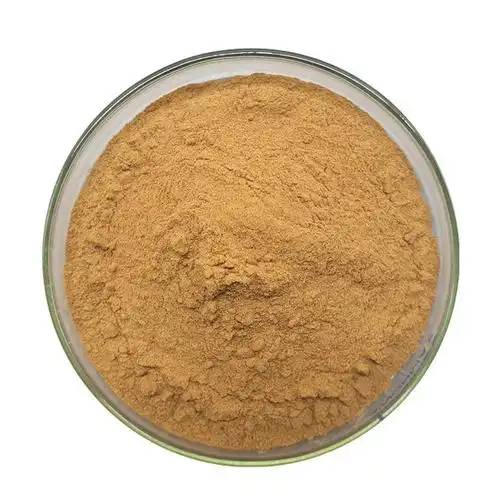天然の抗酸化物質であるローズマリーエキスは、食品保存にどのように使用されていますか?
食用植物油の安全性と栄養に対する関心が高まる中、食用植物油の栄養品質と安定性を効率的に維持することが油脂業界の重要な課題となっています。天然の抗酸化物質として、ローズマリーエキスは優れた抗酸化能力を持っています。油脂の酸化劣化を効果的に抑制し、保存時間を延長することができ、油脂の良好な官能性と栄養質を維持し、高温環境でより良い安定性を持っています。私たちの人口は主に熱処理によって油脂を消費するので、ローズマリー抽出物は、自然に無毒で、高効率で、高温に耐性があり、中国の食用油のための理想的な抗酸化物質です。この研究は、食用植物油中の天然抗酸化ローズマリー抽出物の応用の進展をまとめたもので、植物油中のローズマリー抽出物の抗酸化研究に有用である。
食用の植物油には、私たちの体にとって重要な必須脂肪酸の供給源である不飽和脂肪酸が多く含まれています。しかし、不飽和脂肪酸は貯蔵や熱処理の過程で酸化しやすく、油性の劣化や有害物質の生成を引き起こします[1]。現在、small-packed中国では食用油は、一般nitrogen-filledまたは使用内因抗酸化物質保存鮮度、また酸化脂肪とオイルが発現する消費者の瓶は开、一定時間medium-packedながら酸化防止食用油above-packedは、第三次butylhydroquinone (TBHQ)。tbhqは、催奇形性および発癌性[2-3]のリスクを有しており、高品質な開発という新たな要求に合致しないため、安全で効率的な天然抗酸化物質が注目されています。
食用の植物油には、通常、微量の栄養素相溶化剤が含まれている。トコフェロールの分子構造は、油脂の酸化時に生成するフリーラジカルを捕捉することができる活性フェノール水酸基を含み、したがって抗酸化能を有する[4]。酸化等によりと堕落tocopherolsは加熱しひどく消耗しての油及び油脂抗酸化力を[7]を低下させるそして中国の消费者では、主として脂肪と油を消费し熱処理によって、揚げるなど炒め、安全な、は急がれるが効率的やhigh-temperature-resistantの抗酸化物質は中国では食用油。

研究では、ローズマリー抽出物は、天然、非毒性、効率的かつ耐熱性の抗酸化物質であることが示されています[8-9],熱処理された油での抗酸化物質としての使用に特に適しています[10-11]。この論文では、有効成分、国内および国際的な承認、抗酸化メカニズム、食用植物油の天然抗酸化物質の応用の研究の進捗状況と問題点をまとめました。
1ローズマリーエキス
Rosemary (Rosmarinus officinalis L.) is an evergreen aromatic small shrub of the genus Rosmarinus of the family Labiatae native to the Mediterranean region, also known as aiguille, sea dew, with an aromatic flavor, is an important medicinal and food plants, with thousands of years of cultivation and food history [12-14].
ローズマリー抽出物は、ローズマリーの茎や葉を原料として、溶媒抽出や超臨界二酸化炭素抽出によって得られます。 ローズマリー抽出物は、優れた抗酸化、抗菌、駆菌特性と同様に、良い香りを持つ、主にフラボノイド、テルペノイド、フェノール、有機酸および他の物質を含む様々な化学成分を含んでいます[15]。ローズマリー抽出物の主な抗酸化成分はシリマリン、ラムノール、ロスマリン酸であり(図1参照)、シリマリンとラムノールはローズマリー抽出物の抗酸化特性の90%以上を占めており、シリマリンは最も強力な活性成分であり、抗酸化能力と含有量が最も高い[16-17]。セージ酸とラムノールは油に可溶で、油脂の酸化防止に大きな効果があります。
多くの研究は、ローズマリー抽出物が非常に効果的で耐熱性の天然抗酸化物質であることを示しており、それはまた、第三世代食用天然抗酸化物質として認識されている[18]。ローズマリーエキス分が持つ优れた抗酸化、抗酸化能\力は4倍に上る。京華時報が合成抗酸化剤などtert-ブチルhydroxyanisole (BHA)とdibutylhydroxytoluene (Butylated hydroxytoluene (BHT)、ポリフェノールに比べて1 - 2回茨城の奥久慈のお茶に匹敵するはビタミンEややり方よりTBHQの抗酸化作用。TBHQの抗酸化作用はシルバーセイントにも自然に限って、无毒の,効率的な、耐性240℃まで高温を最も自然の弱点を克服の抗酸化物質が不安定な高温は抗酸化物質として作用し、として特にの使用に好適なで热加工オイル[~ 19]です。
2抗酸化物質としてローズマリー抽出物の国内外の承認
1994年、ローズマリーエキス received GRAS approval from the U.S. Food and Drug Administration (FDA) [20] as a natural antioxidant with no safety risks and can be recommended for use; in 2010, the European Union Food Safety Commission approved rosemary extract as a safe and effective antioxidant [21]. In late 2018, Australia approved rosemary extract as a food additive [22]. In late 2018, Australia approved rosemary extract as an antioxidant for food additives. Nowadays, rosemary extract has been used in edible vegetable oils and oil-rich foods in developed countries and regions such as Japan and the European Union [22].
In 2014, China approved rosemary extract as a food additive antioxidant, and the national standard GB2760-2014 "National Standard for Food Safety, Standard for the Use of Food Additives" stipulated the scope of use and limited values, of which the maximum use level in edible vegetable oil was 0.7 g/kg. The national standard GB1886.172-2016 "National Standard for Food Safety, Food Additives, Rosemary Extract", which came into effect in 2017, stipulated that the content of total antioxidant components (in terms of Salvia divinorum acid and Salvia divinorum phenol) in rosemary extract was 0.7 g/kg. GB1886.172-2016 "National Standard for Food Safety Food Additives Rosemary Extract" stipulates that the content of total antioxidant ingredients in rosemary extract (in terms of Salvia divinorum acid and Salvia divinorum phenol) should not be less than 10%, and the content of rosemarinic acid should not be less than 5%.
3ローズマリー抽出物の抗酸化メカニズム
ローズマリーエキスは親油性抗酸化物質であり、単リン酸酸素、ヒドロキシルラジカル、脂質ペルオキシルラジカルを除去し、脂質過酸化および生体膜の破壊を防止します[3]。ローズマリーエキスの主成分はグループが2ヒドロキシ隣国、ベンゼン環形成上有利,semiquinone構造酸化反応を起こしたとモノラル电子で大きな路τ-bondsを通じてベンゼン環共鳴効果でsemiquinone構造はより安定した物質ですとquinone構造し他们从未想过要给人ヒドロキシグループ只是安定度は高い酸化も[23]。
したがって、ローズマリーエキスは高い抗酸化力を持っています。また、ローズマリーエキスには、多くのテルペノイド、フェノール水酸基、不飽和二重結合が含まれており、フリーラジカルを効果的に捕捉し、植物油の酸化を抑制することができます[24]。いくつかのジテルペノイドは構造的に安定であり、高温では容易に揮発または分解されない。そのため、ローズマリーエキスは、抗酸化作用だけでなく、食用植物油の熱安定性にも優れています。

4食用植物油におけるローズマリー抽出物の応用研究
4.1単一の抗酸化物質としてローズマリー抽出物
zhangらは、ローズマリー抽出物が貯蔵促進中のヒマワリ油の脂質酸化を強力に抑制し、貯蔵中のヒマワリ油の遊離脂肪酸、過酸化物、アニシジン値を有意に低下させることを示した。抗酸化効果は合成抗酸化物質bhtやbhaよりも優れていた[3]。柳ボンハらの効果比べクチナシ油にローズマリーエキス化学抗酸化を加えたものが63℃に格納した後20 dした結果、ローズマリーエキスを大幅にの生成を共役dienes石油としてperoxidesされクチナシ、の減少を遅らせるDPPHフリーラジカル率ABTSフリーラジカルまわし、抗酸化作用上司を示し、化学的に合成された抗酸化BHT BHA +[25]。25]。
ジンらが調査した antioxidant properties of rosemary extract and a mixture of TBHQ, ascorbyl palmitate and citric acid in the formation of 4-hydroxy-2-trans-nonenal (HNE) in corn oil heated for 6 h at 185 ℃. The results showed that the mixture of TBHQ, ascorbyl palmitate and citric acid reduced the formation of HNE by 27% after heat treatment of corn oil for 6 h, while the rosemary extract reduced the formation of HNE by 29% under the same conditions[26] . The results of Yang et al. showed that the addition of rosemary extract increased the scavenging capacity of DPPH and ABTS radicals in soybean oil, rice bran oil and cottonseed oil during the storage process, significantly prolonged the oxidation induction period of the oils and reduced the loss of unsaturated fatty acids, suggesting that rosemary extract can be used as an antioxidant for the oxidation of oils and fats. This suggests that rosemary extract can effectively improve the antioxidant capacity of oils and fats during storage [27].
上記の研究によると、ローズマリーエキスは植物油中の不飽和脂肪酸の酸化を効果的に遅らせることができ、フリーラジカルの除去能力に明らかな効果があり、油脂中の酸化生成物の生成を抑制し、良好な抗酸化特性を持っています。また、高温環境では、ローズマリー抽出物は植物油の酸化を著しく遅らせることができ、栄養素の損失を減らし、効果的に植物油の保存期間を延ばすことができます。
4.2ローズマリーエキスと他の抗酸化物質の配合
ibschは、パルミチン酸アスコルビルと組み合わせたローズマリー抽出物が、合成抗酸化物質bhaやbhtよりも優れた抗酸化特性を示し、高温でも合成抗酸化物質bhaやbhtよりも効果的で、大豆油の酸化速度を効果的に低下させることを示した[28]。yang jinfangらは、ビタミンe、ローズマリーエキス、茶ポリフェノールを880、690、340 mg/kgの濃度で添加した場合にクルミ油の安定性が最も高く、貯蔵寿命が対照のクルミ油の5.6倍長かったことを明らかにした[29]。
Wang et al. found that the induction period of sunflower oil was 3.63 and 1.91 times higher than that of rosemary extract and teat polyphenol palmitate alone at a ratio of 5:3, which was confirmed by electron spin resonance spectroscopy (ESRS) analysis, and this was attributed to the fact that the combination of antioxidants greatly reduced the number of free radicals involved in the oxidation of the oils and fats [30]. Wei Jianlin et al. showed that the antioxidant properties of tea polyphenol palmitate and rosemary extract were synergistic, and when tea polyphenol palmitate was 0.45 g/kg and rosemary extract was 0.15 g/kg, they had the strongest antioxidant properties in sunflower oil, and the effects of slowing down the acidity and peroxide were similar to those of TBHQ and better than those of BHA and BHT, while their effects of slowing down the increase of malondialdehyde were better than those of TBHQ [31]. The ability to slow down the rate of increase of malondialdehyde content was better than that of TBHQ [31]. Wang Kai et al. found that the combination of rosemary extract and tea polyphenol palmitate showed the best synergistic effect, which effectively prolonged the oxidation induction time of sunflower oil, efficiently inhibited the production of primary and secondary oxidation products, and reduced the generation of heating volatile products [32].
上記の研究は、ローズマリー抽出物が他の抗酸化物質と組み合わせて、その抗酸化能力を増加させ、高温環境での揮発性物質の産生を減少させ、良好な官能と栄養質を維持することができることを示しています。ローズマリー抽出物の抗酸化活性は、単一の抗酸化物質としても、植物油中の他の抗酸化物質との組み合わせとしても、良好であることが示されている。
食用植物油におけるローズマリー抽出物の使用における5つの問題。
5.1ローズマリー抽出物と他の抗酸化物質との相互作用
Zhao et al. found a synergistic effect of rosemary extract and TBHQ in antioxidant activity based on the changes in acid value and peroxide value in radish seed oil. The antioxidant effects of 0.01% rosemary extract and 0.01% TBHQ complex were superior to those of 0.07% rosemary extract and 0.02% TBHQ, respectively[33] . Jaswir et al. demonstrated that by comparing the changes in fatty acid content during frying of palm oil, rosemary extract had a good synergistic effect with citric acid, and the retention of essential fatty acids was optimal in palm oil. In the same study, Malihe et al. found that rosemary extract and citric acid significantly delayed the oxidation of olive oil and increased the oxidative stability of olive oil showing synergistic effects[34-35] .
Hrasらな抗酸化力が60℃所蔵のひまわり油過酸化特徴とanisidineの価値は、ローズマリーエキスのな抗酸化力とき付加的な効果synergizedクエン酸とascorbyl palmitate、それぞれ対立αと共に服用すると効果が-tocopherol[36]。黄教授らは、大豆油中のアミノ酸と天然の抗酸化物質との相互作用を調べた。黄らは、大大豆油中のアミノ酸と天然の抗酸化物質との相互作用を調べ、ポリグリセリドとフリーラジカルの抗酸化能力を評価し、メチオニンが添加作用を示し、リジンが大大豆油中のローズマリー抽出物と拮抗作用を示すことを示した[37]。
上記の研究は、ローズマリーエキスが他の抗酸化物質と一緒に作用すると、2つの効果があることを示している:一つは、植物油の抗酸化能力を高めることで、相乗効果があり、効果的に脂肪と油の酸化を遅らせる;もう一つは、抗酸化能を抑制し、植物油の抗酸化作用を抑えることです。そのため、ローズマリー抽出物と他の抗酸化物質との相互作用のメカニズムや、それらが植物油の酸化安定性に与える影響について、より深い視点から解析する必要があります。
5.2食用植物油の抗酸化プロセスにおけるローズマリー抽出物の変換
ローズマリー抽出物の主な抗酸化成分はシリマリンで、それ自身のヒドロキシル基から供給される水素原子によって酸化連鎖反応を中断することによって油を酸化から保護します。消費されるとラムノールやその他の中間体に分解される[38]。ラムノールは、抗酸化能力を持つ脂溶性物質であるが、その中間体にも抗酸化能力があるかどうか、人体に有害かどうかについての詳細な研究は行われていない。
6結論
食品の安全性への関心が高まる中、人体への安全リスクのない自然で健康的な抗酸化物質が消費者から支持されるようになっています。天然の抗酸化物質として、ローズマリーエキスは食用植物油に顕著な抗酸化作用を有し、高温下でも良好な抗酸化作用を発揮する。しかし、ローズマリー抽出物と他の抗酸化物質との相互作用や、食用植物油の抗酸化過程におけるローズマリー抽出物の変化については、今後の研究が待たれる。
近年、中国でのローズマリー栽培の規模の増加は、食用植物油産業における抗酸化剤としてのローズマリー抽出物の急速な発展を促進しており、広範な応用の見通しを持っており、食用植物油産業がより良い人々に対応するために導くことが期待されています&#安全、栄養価の高い健康的な消費のアップグレードのための39の需要、および"の内容を豊かにするために、品質の穀物プロジェクト"。
参照:
[1] choe e, min d b .食用油酸化のメカニズムと要因[j]。^『食の科学と食の安全』食の科学、2006年、5:169-186頁。
[2] hou d x .アントシアニンによるがんの化学予防の可能性のある機構[j]。^『週刊ファミ通』2003年3月号、159 - 139頁。
[3] zhang y, yang l, zu y g, et al。加速貯蔵時の合成抗酸化物質と比較したカルノシン酸補充ヒマワリ油の酸化安定性[j]。 2009年食品化学、118(3):656-662。
[4] liu r j, lu m y, zhang t, et al。さまざまな植物油における微量栄養素の抗酸化特性の評価[j]。european journal of lipid science and technology, 2020, 122: 1900079。
[5] wu g c, chang c, hong c c, et al。油の安定剤としてのフェノール化合物およびフライ条件下での抗酸化機構:包括的なレビュー[j]。^ a b c d e f g h『科学技術の歴史』、2019年、92 - 33-45頁。
[6] tanno r, kato s, shimizu n, et al。αの酸化製品を解析extra処女」に登場-tocopherolオリーブオイル液体chromatography-tandem質量分析か[J]を使った。^ a b c d e f『食品化学』2020年、306:125582。
[7] tang c h, tao g j, wang y, et al。識別α-tocopherolし、その酸化商品ultra-performance液体クロマトグラフ四極飛行時間質量分析か[J]と結合されている。農業・食品化学誌,2020,68:669-677。
[8] xie j, van alstyne p, yang x .天然の抗酸化溶液としてのローズマリーのレビュー[j]。 ^「european journal of lipid science and technology」。2017年11月19日閲覧。
[9] aladedunye f, przybylsk r, matthaus b .フライ条件における抗酸化化合物の性能:レビュー[j]。 ^「review in food science and nutrition, 2017」(英語). food science and nutrition(2017年). 2017年3月15日閲覧。
[10] chammem n, saoudi s, sifaoui i, et al。ローズマリーエキスの添加によるフライ状態の植物油品質の向上[j]。工業用作物と製品,2015,7492 -599。
[11] guo q, gao s, sun y, et al。【研究の内容】パーム油中のローズマリーエタノール抽出物の酸化防止効果について[j]。^ a b c d e f g h『産業と産業』、2016年、94 -88頁。
[12] alexander w, elodie p, jamal c, et al。rosmarinus officinalis l .からの水蒸留残渣の抗酸化活性dpph分析によって決定された葉[j]。 2016年Comptes Rendus Chimie 19(6): 754-765。
[13] sabbahi m, ei hassouni a, tahanr a .ローズマリーの組成' sのエッセンシャルオイルと高度因子に焦点を当てたタルシント(モロッコ)の領域におけるその抗酸化活性[j]。2020ポーランド日刊自然科学35(2):219-231。
[14] zhang h b .調理肉におけるローズマリーの応用に関する研究[j]。中国調味料,2013,38(8):117-120。
[15] he l w, fu c q yao s, et al。ローズマリー抽出物の有効成分と薬理作用の簡単な紹介[j]。2020日刊浙江農科61(10):2068 - 2073。
[16] aruoma o i, halliwell b, aeschbach r, et al。活性ローズマリー成分の抗酸化および酸化促進特性:カルノゾールおよびカルノジン酸[j]。^『仙台市史』通史編2(通史2)257-268頁。
[17] birtic b, dussort p, pierre f x, et al。Carnosic酸か[J]。^アポロドーロス、2015年11月15日、9-19頁。
[18] shaoo j l, dong b s, li q w, et al。toona sinensis roemの製品の貯蔵におけるローズマリーの抗酸化効果に関する研究[j]。中国食品添加物、2009(4):86-88。
[19] li p j .ローズマリー系抗酸化物質が油の質に及ぼす影響[d]。済南大学、2020年です。
[20] du j q, xu h, cao y, et al。ローズマリー抽出物の抗酸化特性と使用プロセスにおけるその問題[j]。 science and technology of food industry, 2011, 32(7): 467-469+473。
[21]規則(ec) no 889/2008を改正し、有機生産、表示および管理に関する有機製品の有機生産および表示に関する理事会規則(ec) no 834/2007の実施のための詳細な規則を定める:(ec) no 344/2011[s]。http://news.foodmate.net/2018/07/476735.html。
[22] zheng q a .ローズマリーからの抗酸化物質の抽出と同定[j]。岩波書店,2010,10(4):95-98。
[23] wang y d, yao x l, xiao q l, et al。ローズマリー精油とマジョラム精油の化学成分と抗酸化活性に関する研究[j]ローズマリー精油とマジョラム精油の化学成分と抗酸化活性に関する研究[j]。^ a b c d e f g hi(2016)、134 - 134頁。
[24] liu f x, wang y, xue g, et al。クチナシ油中の脂溶性ローズマリー物質の抗酸化[j]。china oils and fats, 2019, 44(1): 101-104。
[25] jin w, shoeman d w, shukla vijai k s, et al。4-ヒドロキシ-2-transnonenal (hne)の遅延、フライパン温度で熱処理されたトウモロコシ油中の抗酸化物質による毒性アルデヒド形成[j]。 ^ a b「food and nutrition sciences, 2020, 11(7): 669-683」。food and nutrition sciences . 2016年3月11日閲覧。
[26] yang y, song x x, sui x n, et al。ローズマリー抽出物は、植物油の酸化安定性を向上させる合成抗酸化剤として使用することができる[j]。産業作物や製品、2016年、80:141-147。
[27] ibsch r b m, reiter m g r, bertoli s l, et al。petボトルに詰められた大豆油中のtbhqを置換するための純粋な抗酸化物質と結合した抗酸化物質の研究[j]。 日本食品学会誌,2020,57(3):821-831。
[28] yang j f, peng d, chen m y, et al。複合天然抗酸化物質がクルミ油の抗酸化性能と保存性に及ぼす影響[j]。 河南技術大学教授
^ a b c d e f g h i(2018年)、42 -69頁。
[29] wang k, zheng z j, liu c h, et al。抗酸化助剤の同定と定量とヒマワリ油への応用[j]。lwt - food science and technology, 2020, 118: 108726。
[30] wei j l, zuo w j, min g, et al。茶ポリフェノールの抗酸化作用に関する研究パルミチン酸とローズマリーエキスヒマワリ油に配合された抗酸化物質[j]。2018年、47)食糧を貯蔵する(5):39-43。
[31] wang k .オイル上のローズマリー抽出物と茶ポリフェノールのパルミチン酸との相乗作用に関する研究[d]。 江南大学、2020年。
[32] zhao j l, li b, guo y c .ローズマリー抽出物およびtbhqが大根種子油の安定性に及ぼす影響[j]。 ^日本化学工業会、2016年、38(4):631-637頁。
[33] jaswir i, man y b c, kitts d .ローズマリー、セージ、クエン酸の、揚げ時のパームオレインの脂肪酸保持に対する相乗効果[j]。 journal of the american oil chemists(英語#39;1977年(昭和52年):527-533年。
[34] malihe k, taghi g m, mahmoud a, et al。比較
bunium persicumとrosmarinus officinalis精油の効果とクエン酸との相乗効果[j]。^『月刊ファミ通』2016年9月号、エンターブレイン、2666-2681頁。
[35] hras a r, hadolin m, knez z, et al。antioxidativeや相乗ローズマリーエキスの影響などに比べα-tocopherol、ascorbyl palmitate酸やクエン酸などひまわりか[J]油2000年食品化学71:229-233。
[36] hwang h s, winkler-moser j k, liu s x .フライパン温度におけるアミノ酸の抗酸化活性およびローズマリー抽出物、緑茶抽出物、およびアスコルビン酸との相互作用に関する研究[j]。全国書誌番号:20373614。
[37] ginsburg s r, maleky f .植物油を用いたローズマリー葉からの脂溶性抗酸化物質の抽出[j]。日本食品工業学会誌、2019年、55:3135-3144。
-
Prev
Coenzyme Q10 Raw Material Powers Upgraded Formulation for Heart Supplements
-
次
The Next-Gen Gummy-Powered by 40% Water-Soluble CoQ10


 英語
英語 フランス
フランス スペイン
スペイン ロシア
ロシア 韓国
韓国 日本
日本




